Seventh Timor Awakening programme – personal account
Share the post "Seventh Timor Awakening programme – personal account"

.
The chance to heal
By Rod Hilliker
This article originally appeared in the February edition of St Pat’s Matters.
Timor Awakening Programme – a journey to heal emotional, moral and spiritual wounds of veterans.
TIMOR AWAKENING 7th PROGRAMME
In September 2018, I was selected to be part of the Timor Awakening programme or “TAT’,as it became known, being the 7th programme of its type. This is open to veterans with or without operational service. The programme consists of group sessions conducted daily and managed by Veterans Care for Australian and Timorese veterans.
CAPTION: The author, Rod Hilliker (middle) with two Green Beret comrades. Photo supplied.
It provides holistic health education, group engagement, peer support, pastoral care and historical commendation geared around immersion into Timor- Leste culture. An integral part of the programme was that our group sessions were conducted daily to learn about each other; its objective – to heal the emotional moral and spiritual wounds of veterans.
Day 1:
I met the team in Darwin.
Day 2:
Arriving at East Timor’s capital city, Dili, I was accompanied by a group of veterans I’d met the previous night. Our military experiences varied. Several of us were ex-special forces, others from formations within the ADF having served in recent times. I had the pleasure of meeting Ian Hampel, a 95-year- old veteran who served with 2/4 Commando in Timor in 1942. Ian’s gratitude was ongoing and said on several occasions that during operations against the Japanese, members of 2/4 Commando would not have survived had it not been for the help of the Timorese, including the criados – young males who would invariably assist Australian soldiers.
Nobody was prepared for the enthusiastic welcome we received from the Timorese, many of whom were former guerrilla fighters and veterans of the 24-year resistance war following the Indonesian invasion of 1975. It has been estimated that throughout this secret campaign, more than 200,000 East Timorese perished at the hands of their invaders and the brutal treatment they endured during that struggle. At Dili, we meet our security detachment from army and police who were to be our constant companions and welcome shadows.
The first to greet the group on TA7 was Xanana Gusmao, a former militant, and first President of Timor Leste. After being ushered into the VIP lounge for the official greetings, I soon discovered that Timorese speeches were seldom short. However, Xanana gave an impassioned speech for peace, leaving not a dry eye in the room. I soon learned that this was to be a feature of the overall Timor experience.
Day 3:
I attended official engagements; the first at the Presidential Palace of Timor Leste President Francisco Guterres, popularly known as Lu- Ola, who welcomed us individually and of course the obligatory speeches.
We shared lunch together later in the day at a training centre that educated orphan children. I sat beside a former guerrilla fighter, with the code name Green Leaves. We had language barriers which were overcome as old soldiers do: they overcome and adapt. So, we showed each other photos of our respective families and this barrier melted.
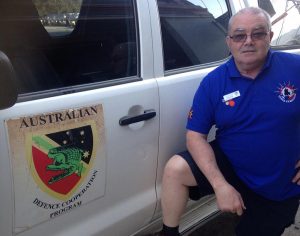
After lunch it was speech-time again and the presentation of wooden crucifixes. Scanning the room, I noted all our hosts appeared to have been given one, I noticed a young lady, meekly standing to one side. Making my way through the crowd, I approached this young woman and presented her with a crucifix. Instantly I was rewarded with a most beautiful smile that lit up the room. It was as though she had won the lottery.
Soon it was time for us to leave. Just prior to boarding our awaiting land rovers, the young woman, whom I now know to be Leila Auxiliadora da Silva, ran to me saying she had something she wanted to give me and presented me with a small tapestry which she had done. For once in my life, I was speechless at her generosity reaching out to a stranger. This encounter has left a lasting impression and a glimpse into the beauty of a young girl’s heart. I may not be able to recall all the names of the places we visited, and which are still floating in my mind; but I will never forget that girl’s gesture.
Later in the afternoon we were joined at the hotel by a group of university students who assisted us in preparing books and pens which were to be distributed as aid whilst on tour.
These remarkable kids had such unique personalities, are optimistic about the future and full of hope. I learned that the female-to-male ratio is 2 to 1 and that 60 percent of the population is less than 30- years old. This is the legacy of their tragic past.
We visited the World War II site where decades ago members of the Australian 2/2 Commando unit landed, informing the Portuguese garrison that they were there to stay, uncertain as to how they would be received, as strictly speaking Portugal was neutral. Fortunately, the Portuguese administration saw it their way.
In the evening we were hosted by the Australian Ambassador and his wife at their residence on the Dili waterfront and the Australian military community who made us feel very welcome with some of us renewing acquaintances with old mates.
Day 4:
We visited the Santa Cruz cemetery, the site of the Dili massacre in 1991. 250 East Timorese were killed, mostly high school children during a funeral procession. We were fortunate to have with us Max Stahl, the journalist who was filming for Yorkshire TV during that horrible event. He walked us through the event, step-by-step, even showing us where he buried his film for later retrieval. This film which highlighted the plight of the East Timorese people was instrumental in instigating the initiative to liberate Timor Leste.
We later went to the resistance museum and on to the infamous political prison. My new found- friendGreen Leaves was our guide with a bright sense of humour. He had been an inmate at this prison and determined to share his experience with us. He spent two years in a shared cell about 2 x 3 metres with 13 other inmates. Their only respite was being taken out for interrogation. He described how he was in a group of 67 political prisoners who were sent to Jakarta; only 14 returned.
I stood for a few moments in that cell with him and I could see he was momentarily taken back to that time, and just as quickly offered me a hearty handshake as I squeezed his shoulder in acknowledgment. What I found astonishing was his capacity to forgive, impressing on us through our Australian Timorese interpreter, Jamie, that it was the only way to move forward.
Day 5:
Departing Dili, we made our way into the mountains, being introduced to the delights of the Timorese roads which have the capacity to traumatise even the most stout-hearted, suggesting the urgency to visit a sympathetic chiropractor at the earliest opportunity.
Our first stop was a remote two-room primary school complete with eager, cheeky kids. Here we handed out the first of the school books and pencils. We continued through areas in which Australian commandos had operated during World War II and gained a better appreciation for the terrain and its challenges which had the effect of tying down 20,000 imperial Japanese troops, a manoeuvre which eventually impacted on the war’s outcome. We stopped at two ambush sites including the Dare site where a successful ambush was executed.
We continued on the road from Dili to Remexio, an administrative post in the Aileu District of East Timor. During World War II, this was another ambush site, which took out the Japanese commander known as the Singapore Tiger who was said to have been riding on a white horse at the time and on his first venture out of Dili. This was of interest to Mick Batchelor, as his father had been in that action. The significance of our visit did not escape him – visibly this man of the land was emotionally moved.
Later we visited a former stronghold where the coup of 2006 to 2008 was launched. It was led by Major Alfredo Reinado, the commander of the military police. This fort is situated on a plateau and dominates the village going back to the time when East Timor was a Portuguese colony. We had an opportunity to observe daily life in that rural area, with its open markets and village life. I saw Timorese pony trains being prepared for delivery of supplies deeper into more remote areas where the chewing of betel nut seemed mandatory.
Day 6:
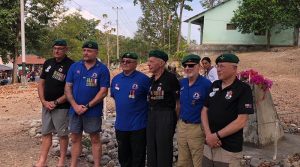 We drove to Betano, the site of the remains of the voyager wreck where 2/4 Commando was landed. It ran aground and had to be scuttled. The population of the district seemed to have turned out to pay their respects including a host of dignitaries. After the ceremony we had a chance to view the remains of the Voyager. Through the years the sea and the locals have laid claim, leaving only its engine.
We drove to Betano, the site of the remains of the voyager wreck where 2/4 Commando was landed. It ran aground and had to be scuttled. The population of the district seemed to have turned out to pay their respects including a host of dignitaries. After the ceremony we had a chance to view the remains of the Voyager. Through the years the sea and the locals have laid claim, leaving only its engine.
We visited Raiak Leman Veterans University where more aid was delivered, and no effort spared to welcome us. It was not the type of university as we know it in Australia. But it was somewhere between a high school and a TAFE college providing students with hope for the future through basic educational opportunities. A local head man gifted another five acres of land to the veterans’ care organisation for the purpose of extending the campus.
Day 7:
After passing a comfortable night at our Hotel (Uma Liurial), and following our morning session, we made our way through the Timorese countryside passing even more remote rural villages, being greeted along the way by all we passed and onto the location known as JAVA2, which in the time of the occupation evoked only fear for the Timorese as being sent to Java meant you would not be seen again.
Its true meaning only being realised when I stood overlooking its sheer cliff and pondered the unlikely chance of surviving a fall. We were told this was one of the preferred methods of disposing of dissidents. It is not known how many victims met their fate off this cliff. Today it’s an eerie and peaceful place, the view is nothing more than spectacular. But I never saw any birdlife. I don’t recall exactly if it was on this day or not, but we had been given a small black rock to carry. It was symbolic of what was troubling us in our lives with the intention of leaving it in this country some time before we left.
Ian requested we make a detour to Ainaro, the village where two priests were murdered and mutilated by the Japanese whilst celebrating Mass. We were mesmerised as Ian recounted his experience as his patrol passed through the village after the event. He described in detail his memories in front of that same altar – pointing to the door he had come through describing the vivid horror, as if it was only yesterday.
In the same village and perhaps 200 meters away stored in a large hall are remains of 2,500 Timorese victims. Each box draped in their nation’s flag and where possible, their details displayed as a short narrative and the occasional photograph. We learnt that in each district there are similar sites and that regularly remains are uncovered and stored to give them some dignity.
We returned to Dili via a direct and more modern road absent in the main of potholes, but conscious of the road slides sometimes having to avoid boulders the size of small motor vehicles. It took around 30 minutes to reach Laugata beach site. Major Mike Stone described military actions experience in more recent times. On arrival our group was divided into two, going to separate accommodations for the night. The black volcanic sand and sunset being a welcome change to the dusty roads. Winding down in this environment was no problem.
Days 8 and 9:
After breakfast, our group went to rendezvous with the other group at Likisa, located a little further along the coast for our morning session. From there we made our way along the coast road. I couldn’t help thinking when the roads are complete, what a delight it will be to revisit, as the sea in contrast to the landscape must be seen to be appreciated. Stopping at a remote fishing village the people were eager to meet the Aussie vets.
Cutting inland we made our way to Balibo and the traditional Timorese welcome at Fort Balibo. There was time to visit the small museum known as Australia House dedicated to the memories of Australian journalists murdered during the early part of the 1975 invasion. It was the right place to leave Australian-style comments in the Visitors’ Book.
I was directed to the site known as the Chinese House stopping briefly at a local store where witnesses stated five Australian journalists were to be executed. I walked through the now derelict building taking a few pictures for my records and said a prayer for their souls. My mood was transformed once I left this building which had been the memory of such horror and reminded of the Timorese gift of optimism which has a remarkably cleansing effect.
Some local children had been waiting outside to greet me in local dialect and broken English. Eager to meet an Aussie, they were not remotely interested as to why I was in this old house. I suspected however, they were motivated by curiosity as to the contents of my shopping bag which I gladly shared with them.
After dinner former fighters shared their experiences with us. Speaking to one of the Timorese veterans I asked her how did she manage to survive 24 years in the mountains? She said they had faith that the Australians would someday return to help them: ‘all we had to do was hold out’. Placing her hand gently above my heart, she said that “the Australian Government turned away from us, but we always knew the Australian people supported them”. I was grateful to be wearing dark sunglasses as I stared at her in admiration.
During our stay, some of us took the opportunity to attend Mass at Balibo. Chaplain Gary Stone, a man of great character assisting. Afterwards we left some aid at the local school returning briefly to the fort, and then onto Maliana Markets in the township stopping on the way at Nanura River to gain a better appreciation of border operations of 1999 to 2004 and the Calico Valley of 1942. Taking a detour on the way to visit the border with West Timor for a photo opportunity.
Officials from both sides were polite but business-like with Indonesian Area Commander, coming over to say hello. We had lunch later in a local restaurant in Maliana. The concept of fast food is non-existent in this part of the world, but despite this our hosts were delightful. So, we contented ourselves with our own company till we were fed. Walking around the dusty market didn’t take all that long, on sale mostly local products and second- hand clothing. Seemed it was also a good season for betel nut.
Returning to Balibo in the afternoon, our group session’s topic around the fire being forgiveness, forgiving others and oneself, sharing some deep and personal stories. My personal conclusion being that the price of retribution is too much for humanity to pay and a sense of wonder at my fellow human beings.
Days 9 and 10:
On the morning of 17 September, we meet at the Australian Memorial outside the gates of Balibo Fort. A memorial service being joined by the Timorese veterans, an emotional time, as we each were asked to remember someone close we had lost. And being a part of something bigger than yourself perhaps making the world a better place, for a while at least. Some of us gave a little of ourselves and some gave everything. There were short readings and a reflective sermon given by Padre Gary Stone. Both national anthems were sung and the chance to leave our black rock behind.
We left Balibo and made our way via the dusty coastal road. I was conscious of the rumble of the vehicles’ tyres hitting the road and equally conscious of the silence as we remained quietly reflecting on what we had learnt stopping at a local craft market on the black sandy beach and opposite the Dutch Fort. Some took the opportunity to visit the local orphanage run by nuns to deliver more aid. And finally stopping at Dili Plaza; being left to our own devices for the remainder of the day to decompress. one of the boys started crying as he called home sobbing that he just wanted to speak to someone he loved. We all did.
That evening we were invited to the private home of Jose Manuel Ramos-Horta who had overseen the political wing during the resistance, and later became President of East Timor, and who in 1996 was awarded the Nobel Peace Prize.
Michael Stone walked us through the site where in 2008 Ramos-Horta was shot during an assassination attempt; two out of the three assassins being neutralised. He warmly welcomed us in the Timorese way, entertaining us with some light-hearted stories making sure his esky was full and that we were well fed.
On our final day as we split up into separate groups, some electing to walk up to the Jesus statue that overlooks the city – a walk not for the faint hearted, as I was soon to discover. We spent the remainder of the day in preparation for our departure. That evening we had our final circle time and the opportunity to farewell our new-found-friends at the Hotel Dili Plaza. It occurred to me that on this journey we had mixed with all levels of society, the one commonality being their dignity and desire to rebuild their country.
Early the next morning we made our way home, each enriched by the experience and deep in our own thoughts.
My gratitude goes to the support staff of this programme who inspired, motivated and at times challenged me. The programme gave participants the chance to spend time with like-minded individuals with similar life experiences, and in some cases the need to expel their demons.
Finally, I wish to state that I have witnessed true Christian faith that has taken root in this country and noted it is the type of faith I would like to adopt.
ROD HILLIKER NORTHMEAD, NSW
Ex 1 Commando Regiment
Rod Hilliker is a parishioner of St Patrick’s Cathedral Parish, Parramatta.
With thanks to St Pat’s Matters.
.
.
.
.
.
.

.
.
Share the post "Seventh Timor Awakening programme – personal account"

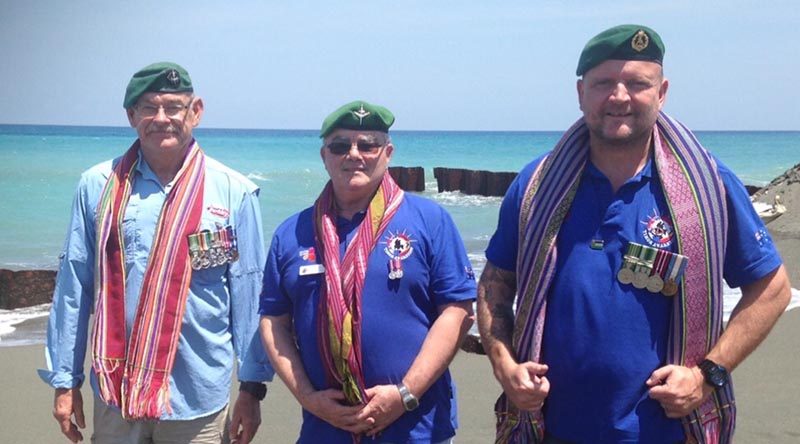

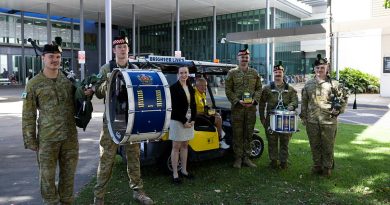
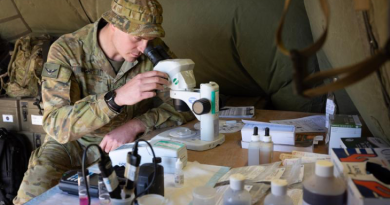
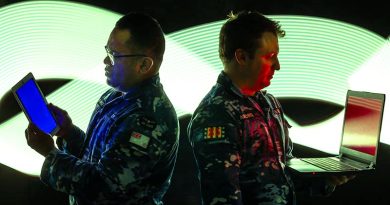
Hi everyone, Great work. I been to East Timor ( Timorleste) as a volunteer Registered Nurse and have been training nursing students in CPR and Basic Life Support. Previously a volunteer with the Mary Mackillop East Timor Mission under Sr Josephine Mitchell and Susan Connolly. I had a request for some training manikins for CPR. Any one interested in fundraising let me know please. email below. I can send some photos if necessary
best wishes
From a CONTACT fan via email…
Good Afternoon Brian,
I have just finished reading your newsletter “Contact 95” and I wish to give a genuine commendation to Rod’s article ‘Timor Awakening’. This article should be read by thousands of people everywhere – truly! There are several comments within the article, particularly those coming from East Timorese who were there from the initial unlawful invasion in 1975 right through to the 1999 event where the Australians helped them get rid of the menace who had been slaughtering them for the past 24 years.
I remember when the 1999 deployment was being planned, and the militia was openly looting, killing and plundering, people were saying that our forces were going too late – meaning they were a month or three too late. Many ex-servicemen, including myself, wrote to the Government of the day saying, ‘Yes our deployment is going too late – some 24 years too late’. I always thought the toll of East Timorese during the 24 years was around the 60,000 to 80,000 people. But your writer, Rod, said it was around the 200,000 mark. This is terrible. Then Rod described the lady who answered his question, “How did you survive in the jungle for 24 years?” Her answer was, “We knew the Australians would come – just we didn’t know when”.
I could go on with more commendations, but please – ask if this article can be given a far wider scope of publication – or at least some of the article.
Keep up the good work.
“Ex 1 Commando”……the nightmares must be flooding back being in Dili for the first time, am I missing something here or are we using the woke definition of ‘veteran’ where everybody gets a trophy?
Hi Greg. The ADF and DVA definition of veteran is “served one day in full-time service”.
That aside, INTERFET in 1999/2000 was designated “warlike service” and attracted the AASM (Australian Active Service Medal) – so I see no reason for anyone to question or doubt a fellow veteran’s entitlement.
Totally agree with the AASM and Interfet, I just don’t see one and 1 Commando (Reserves) were never deployed.
Sorry. Didn’t pick up on the nuance.